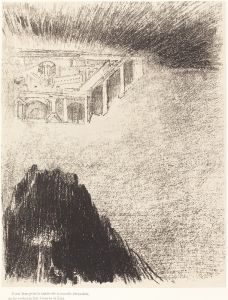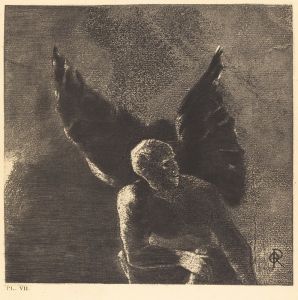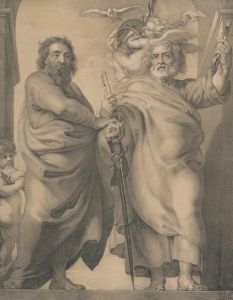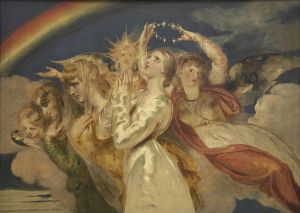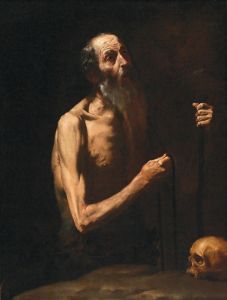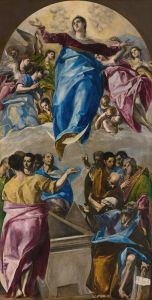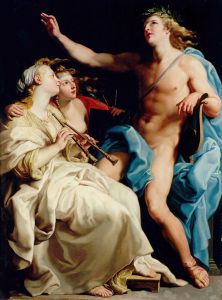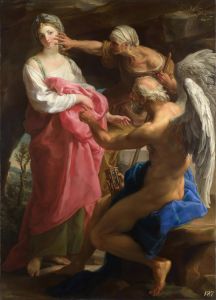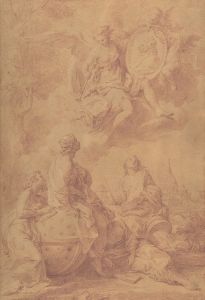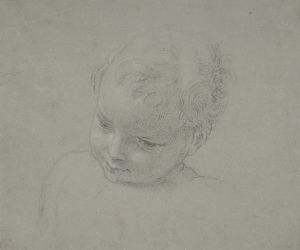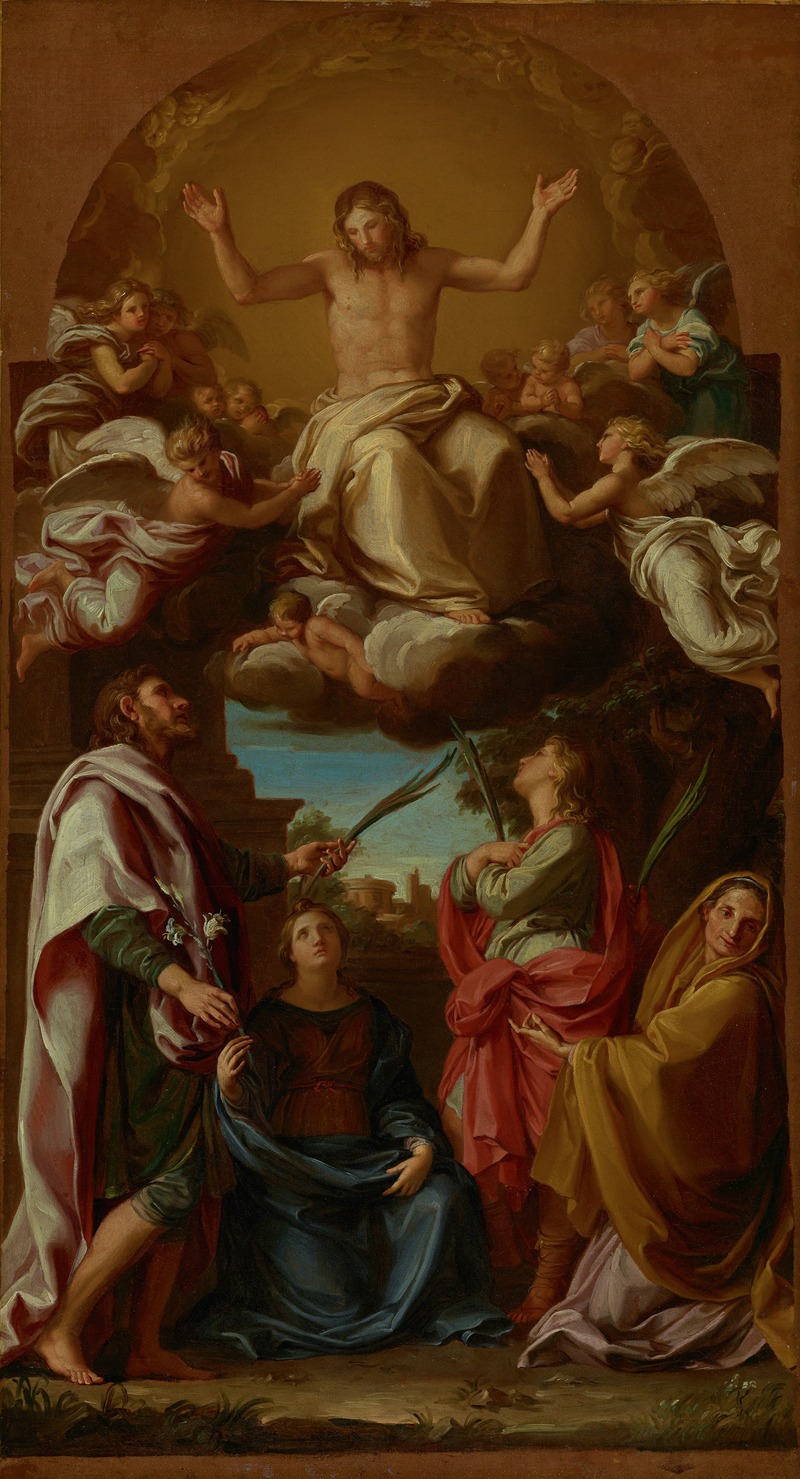
Christ in Glory with Saints Celsus,Julian Marcionilla and Basilissa
A hand-painted replica of Pompeo Batoni’s masterpiece Christ in Glory with Saints Celsus,Julian Marcionilla and Basilissa, meticulously crafted by professional artists to capture the true essence of the original. Each piece is created with museum-quality canvas and rare mineral pigments, carefully painted by experienced artists with delicate brushstrokes and rich, layered colors to perfectly recreate the texture of the original artwork. Unlike machine-printed reproductions, this hand-painted version brings the painting to life, infused with the artist’s emotions and skill in every stroke. Whether for personal collection or home decoration, it instantly elevates the artistic atmosphere of any space.
"Christ in Glory with Saints Celsus, Julian, Marcionilla, and Basilissa" is a notable painting by the Italian artist Pompeo Batoni, created in 1736. Batoni, renowned for his skillful blending of Baroque and Rococo styles, was a prominent painter in 18th-century Rome, celebrated for his religious and mythological works as well as his portraits of European aristocracy.
This particular painting is an altarpiece, a common form of religious art designed to be placed behind the altar of a church. It depicts Christ in a state of glory, surrounded by four saints: Celsus, Julian, Marcionilla, and Basilissa. The composition is typical of Batoni's work, characterized by its dynamic movement, vibrant colors, and meticulous attention to detail.
In the painting, Christ is portrayed in a celestial realm, emphasizing his divine nature and authority. He is often depicted with traditional iconography, such as a radiant halo and a gesture of blessing, which are common in Christian art to signify holiness and benevolence. The surrounding saints are shown in adoration, each with attributes that identify them and their martyrdom or sainthood.
Saint Celsus, often depicted as a young martyr, is traditionally associated with Saint Julian. Saint Julian, known as Julian the Hospitaller or Julian of Antioch, is venerated as a martyr who suffered for his faith. Marcionilla, sometimes less commonly depicted in art, is recognized as a Christian martyr, often associated with Julian. Saint Basilissa, who is frequently paired with Julian, is also celebrated for her martyrdom and steadfast faith.
Batoni's work is distinguished by its clarity and harmonious composition, drawing the viewer's eye towards the central figure of Christ while maintaining a balanced arrangement with the saints. The use of light and shadow in the painting enhances the divine atmosphere, a technique Batoni mastered to convey spiritual themes effectively.
The painting reflects the religious fervor and artistic trends of the 18th century, a period when the Catholic Church commissioned numerous artworks to inspire devotion and convey religious narratives. Batoni's ability to capture both the grandeur and intimacy of religious subjects made him a favored artist among patrons seeking to adorn churches and chapels with inspiring imagery.
"Christ in Glory with Saints Celsus, Julian, Marcionilla, and Basilissa" exemplifies Batoni's contribution to religious art, showcasing his technical prowess and his ability to infuse traditional religious iconography with a sense of vitality and grace. This work remains an important example of 18th-century religious painting, reflecting both the artistic and spiritual values of its time.





